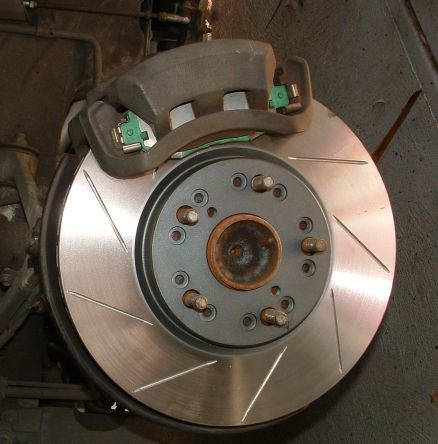 |
Wheel Offset, Spacers and broken studs |
by Peter Scott
Why is offset so important and what on earth is it? Offset is the distance from the centre of the wheel to the hub face. Stock Soarer offset is +50mm. This is unusual and quite large in the car world. Nissan for example is typically +38mm, so are current FORD wheels.
Here is a animated gif I drew myself!!!
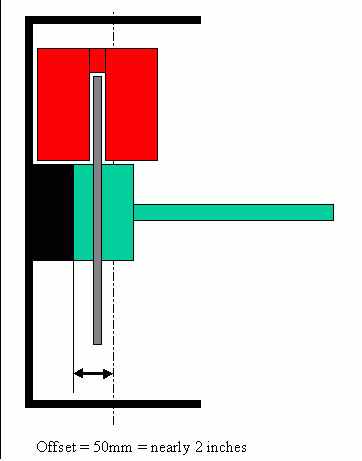
An offset of +50mm means the wheels sit closer to the centre of the car than an offset of say 30mm.
+30mm offset wheels will stick out further and give the car a wider track. Put Nissan wheels on a Soarer and they stick out more.
So what's the big deal. Going from +50 to +30mm offset changes the scrub radius. The entire geometry is designed around an offset of +50mm for a 7inch rim.
Lowering the offset, making the wheels stick out more, will change the feel of the steering. It will make the steering that little bit heavier and hitting bumps can kickback through the steering a bit more. The car will have greater "turn in" - it can give the steering a sporty, more involved feeling.
Low offset can also amplify problems. For example if a car has worn tyres or poor wheel alignment lowering the offset from 50 to 38mm can make the car tramline.
Tramlining is that feeling that the car is suddenly on rails and is steering by itself. The car can follow ruts in the road and pull left or right. Typically this results in two hands firmly on the wheel, corrections continually being made. This can be tiring and demands more concentration. A Soarer set up correctly can be steered with just 2 fingers (not that you would.....). It will go over any sort of bad road condition and won't pull sideways and will track true and straight just like the factory designed. The car is a pleasure to drive and requires no effort.
I have found that incorrect wheel alignment is a terrible culprit and offset can make it even worse.
I have also found that some tyres will tramline and some won't. I have also found that worn tyres will tramline worse then new ones. Especially if worn unevenly. For example if the inside of the tyre is worn then tramlining can be a problem.
Poor alignment, worn tyres and low offset is a sure fire recipe for tramlining - the car will need a firm grip to keep it tracking straight.
Offset can also affect the clearance of large Supra 4 pot brakes. Rims with deep dish spokes will hit supra brakes. Decreasing offset ( making the wheels stick out more) can push wheel spokes further away from brakes allowing clearance. Sometimes a spacer can be added between the wheel and hub to lower the effective offset and allow brake clearance. Here is another animated gif showing that a small offset can compensate for spokes hitting the brake caliper.
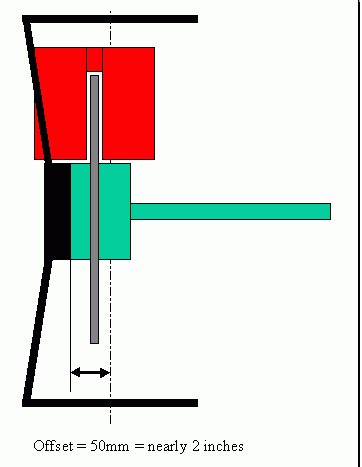
Many spacers push the wheel away from the hub so that the wheel is no longer supported by the centre spigot. This can result in the studs breaking. Spacers are frowned upon for this reason.
Cheap spacers look like this:
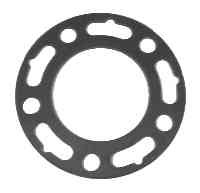
they come in various thickness. They have no centre "shoulder". The wheel no longer mates to the hub properly and the studs take all the weight of the car as a shear force. Longer studs would also be needed to fit this type of nasty filthy spacer.
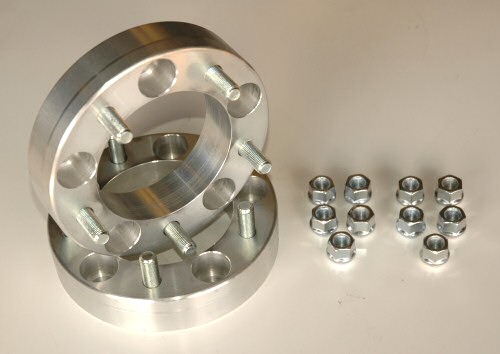
For a bigger spacer with stock length studs then this contraption can be used. Being a generic design it has a large centre hole with no lip or shoulder to support the wheel. Again the studs take all the weight and can shear off. No wonder they are illegal.
Expensive spacers are designed specifically for a car and the centre hole mates exactly. They also come with a shoulder or spigot to support the wheel. If you take your Porsche racing and fit larger rims and want to increase the offset then these are the type you get:
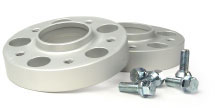
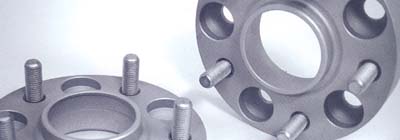
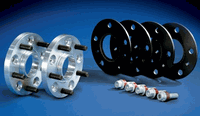
All of these spacers have that shoulder around the center hole. This is what the wheel should fit perfectly on. Soarers have a shoulder like this on the hub to support the wheel. The hub shoulder also makes balancing the wheel much easier.
Non genuine wheels are made in a generic way. The centre hole of the wheel is made large enough to fit most cars. They are often too big for a Soarer. The centre hole of the wheel is too big for the hub should or spigot of the Soarer hub and it flops around when fitting it. Only the studs hold the wheel in place and take all the weight. Aftermarket wheels like this often come with a "fitting kit". A bunch of spigot rings like the ones in the pictures below. These are pressed in to the wheel so that the wheel matches the hub perfectly. It takes the load off the studs and makes the wheel easier to balance.
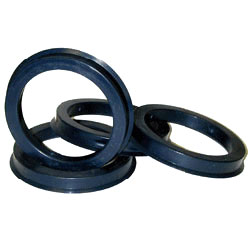
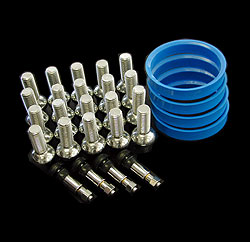
Below is a picture of a wheel with the spigot ring fitted - essential for safety and to remove vibrations.
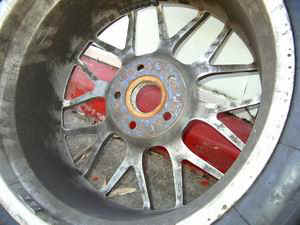
The 60mm lip that sticks out of the centre on the front and rear hubs is designed to support the wheel. The studs are designed to clamp the wheel to the hub - not take the weight of the wheel.
